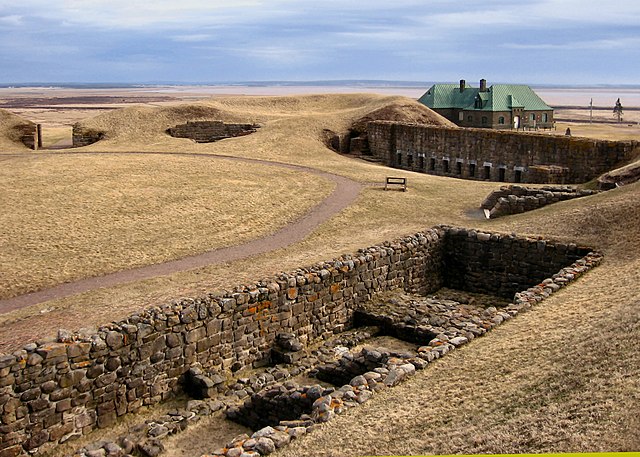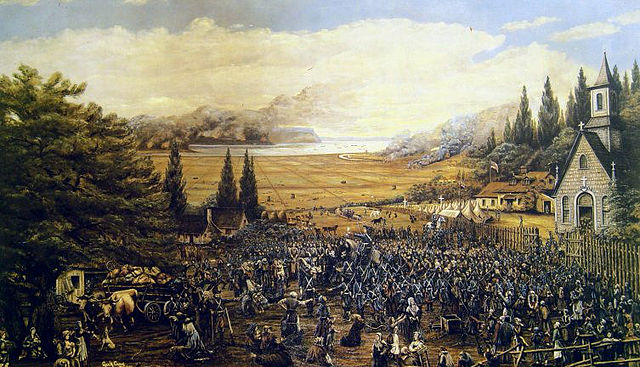The St. John River campaign occurred during the French and Indian War when Colonel Robert Monckton led a force of 1150 British soldiers to destroy the Acadian settlements along the banks of the Saint John River until they reached the largest village of Sainte-Anne des Pays-Bas in February 1759. Monckton was accompanied by Captain George Scott as well as New England Rangers led by Joseph Goreham, Captain Benoni Danks, as well as William Stark and Moses Hazen, both of Rogers' Rangers.
Robert Monckton, British commander in the Saint John River campaign
Boishebert (1753)
St. John River campaign: The construction of Fort Frederick (1758) by Thomas Davies
St. John River campaign: A View of the Plundering and Burning of the City of Grimross (present day Arcadia, New Brunswick) by Thomas Davies in 1758. This is the only contemporaneous image of the expulsion of the Acadians.
Lieutenant-General Robert Monckton was an officer of the British Army and colonial administrator in British North America. He had a distinguished military and political career, being second in command to General James Wolfe at the battle of Quebec and later being named the Governor of the Province of New York. Monckton is also remembered for his role in a number of other important events in the French and Indian War, most notably the capture of Fort Beauséjour in Acadia, and the island of Martinique in the West Indies, as well as for his role in the deportation of the Acadians from British controlled Nova Scotia and also from French-controlled Acadia. The city of Moncton, New Brunswick, and Fort Monckton in Port Elgin, New Brunswick, are named for him. A second more important Fort Monckton in Gosport, England, is also named for him. It remains an active military establishment, and currently houses the British Secret Intelligence Service (MI6) training section. Monckton sat in the British House of Commons between 1774 and 1782. Although never legally married, he raised and was survived by three sons and a daughter.

Robert Monckton by Thomas Hudson
View of Fort Beauséjour showing the foundation of the Officers Quarters in the foreground, the modern (1930s)museum in the middle ground, and Cumberland Basin in the background. Monckton approached the fort from Aulac Ridge, which would be behind the observer.
Grand Pré: Deportation of the Acadians during the Bay of Fundy Campaign (1755)
St. John River Campaign: A View of the Plundering and Burning of the City of Grimross (present day Arcadia, New Brunswick) by Thomas Davies in 1758. This is the only contemporaneous image of the Expulsion of the Acadians.







